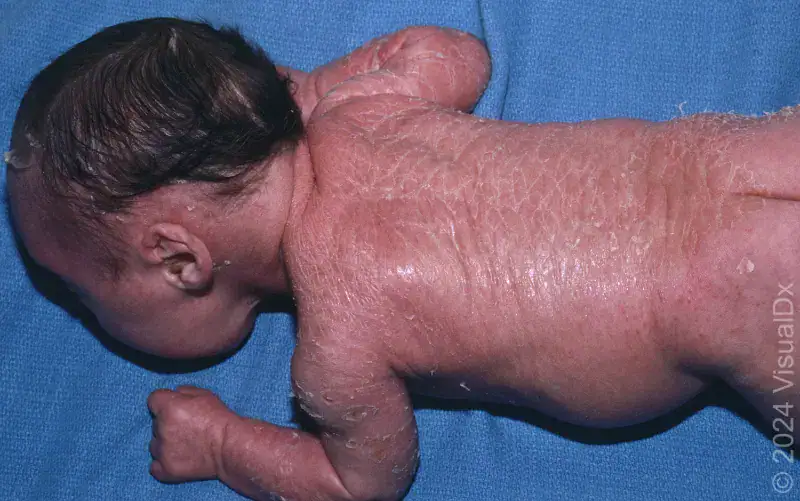Published on
Download the article PDF: Insights In Images July August 2025

Differential Diagnosis
- Bullous congenital ichthyosiform erythroderma
- CHIME syndrome
- Congenital nonbullous ichthyosiform erythroderma
- Lamellar ichthyosis
Diagnosis
The correct diagnosis in this case is lamellar ichthyosis. On the image above, diffuse shiny, plate-like scales and underlying pink erythema may be seen on the face, trunk, and arms. Laboratory testing in this case confirmed a deficiency of transglutaminase-1.
Lamellar ichthyosis is a rare, genetic disorder, resulting from variants in the cornified envelope of keratinocytes in the skin. The hallmark of the disease is a collodion membrane (a translucent, thick, cellophane-like membrane) at birth, which is shed, and followed by diffuse erythematous, scaly skin with thick plate-like scales. Babies may have trouble feeding, dehydration, electrolyte imbalance, breathing problems, and unstable body temperature.
What To Look For
- Rash is described as diffuse erythroderma, scaly skin, and thick plate-like scales
- Greatest involvement is seen in the trunk and lower extremities
- Palms and soles may be affected variably
- Scalp involvement may lead to scarring alopecia
Pearls For Urgent Care Management
- Evaluate the infant’s fluid status and nutrition status as dehydration is common
- Evaluate the infant for evidence of systemic infection and heat loss due to the impaired epidermal barrier
- Initial treatment is topical application of large amounts of petroleum-based emollients
- Immediate referral to a multidisciplinary team including a dermatologist is indicated
